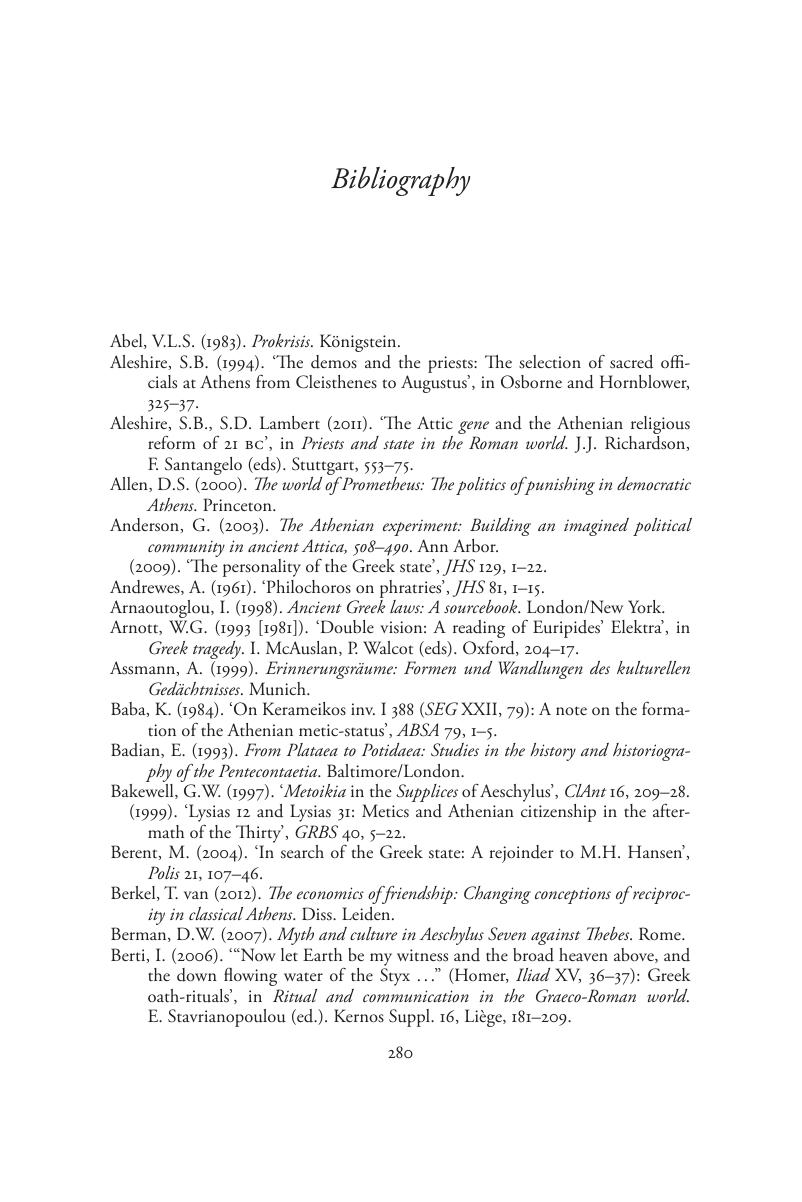Book contents
- Citizenship in Classical Athens
- Citizenship in Classical Athens
- Copyright page
- Contents
- Tables
- Preface
- Acknowledgements
- Abbreviations
- 1 Rethinking Athenian Citizenship
- 2 A Bond between Polis and Gods
- 3 The Value of Descent
- 4 Citizens, Male and Female: Vocabulary
- 5 Participation: Public Roles and Institutions
- 6 Outlook: Athenians and Others
- Bibliography
- Index of Sources
- General Index
- References
Bibliography
Published online by Cambridge University Press: 24 March 2017
- Citizenship in Classical Athens
- Citizenship in Classical Athens
- Copyright page
- Contents
- Tables
- Preface
- Acknowledgements
- Abbreviations
- 1 Rethinking Athenian Citizenship
- 2 A Bond between Polis and Gods
- 3 The Value of Descent
- 4 Citizens, Male and Female: Vocabulary
- 5 Participation: Public Roles and Institutions
- 6 Outlook: Athenians and Others
- Bibliography
- Index of Sources
- General Index
- References
Summary

- Type
- Chapter
- Information
- Citizenship in Classical Athens , pp. 280 - 305Publisher: Cambridge University PressPrint publication year: 2017



